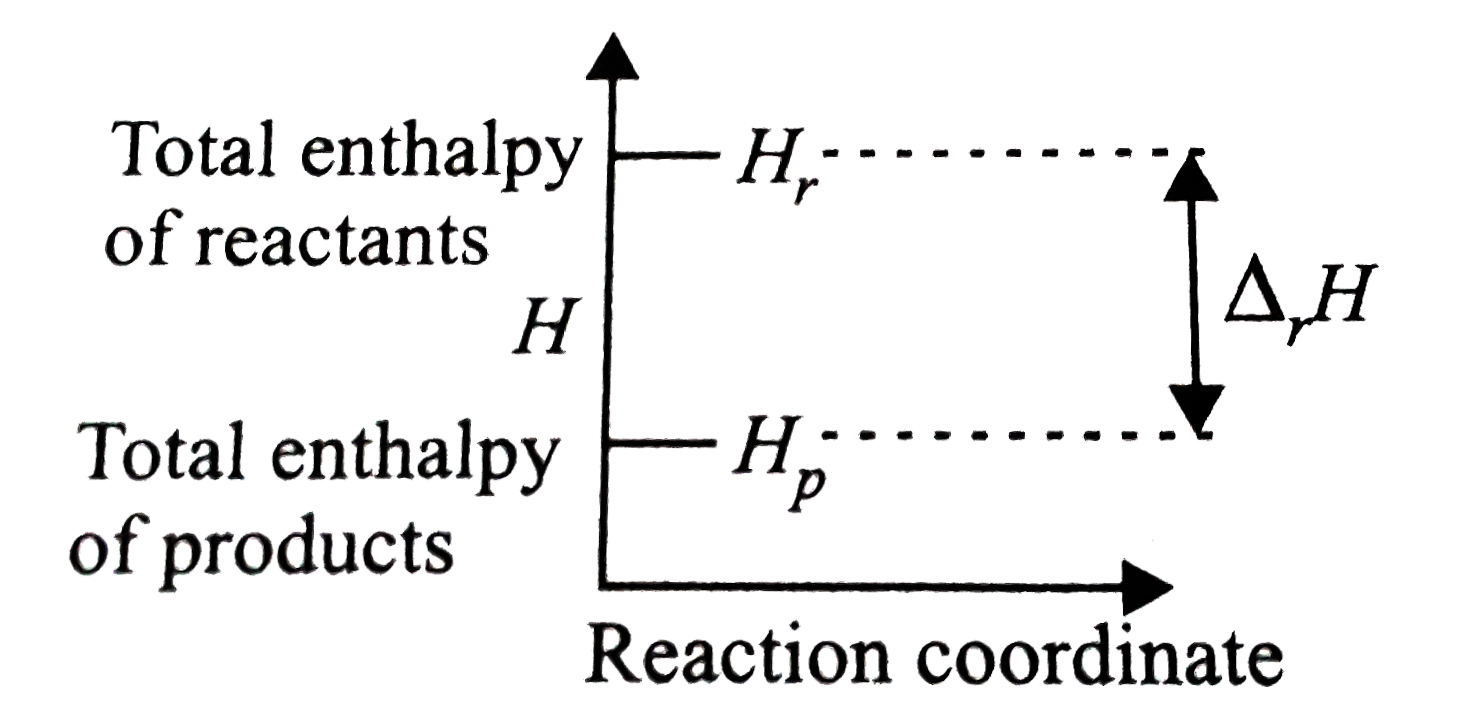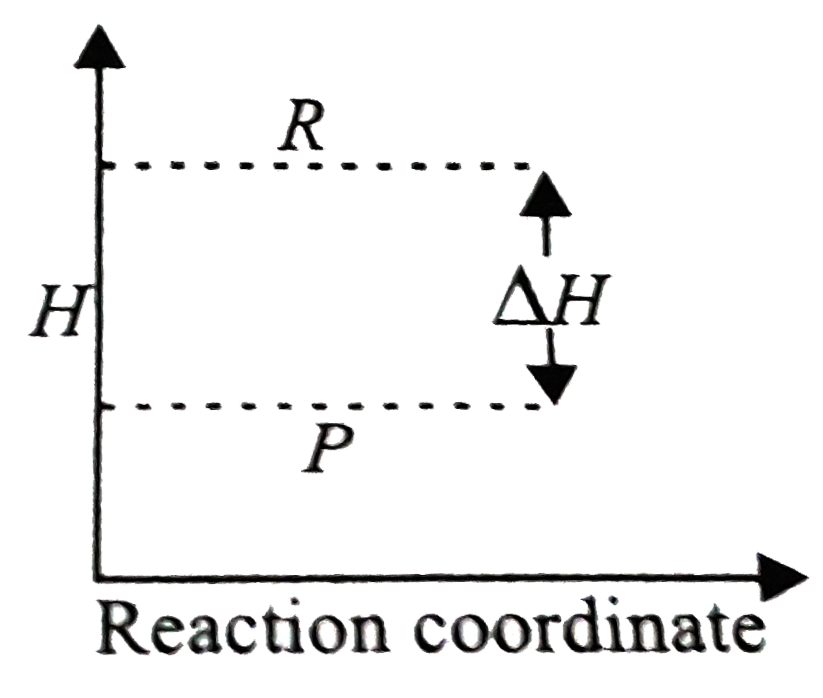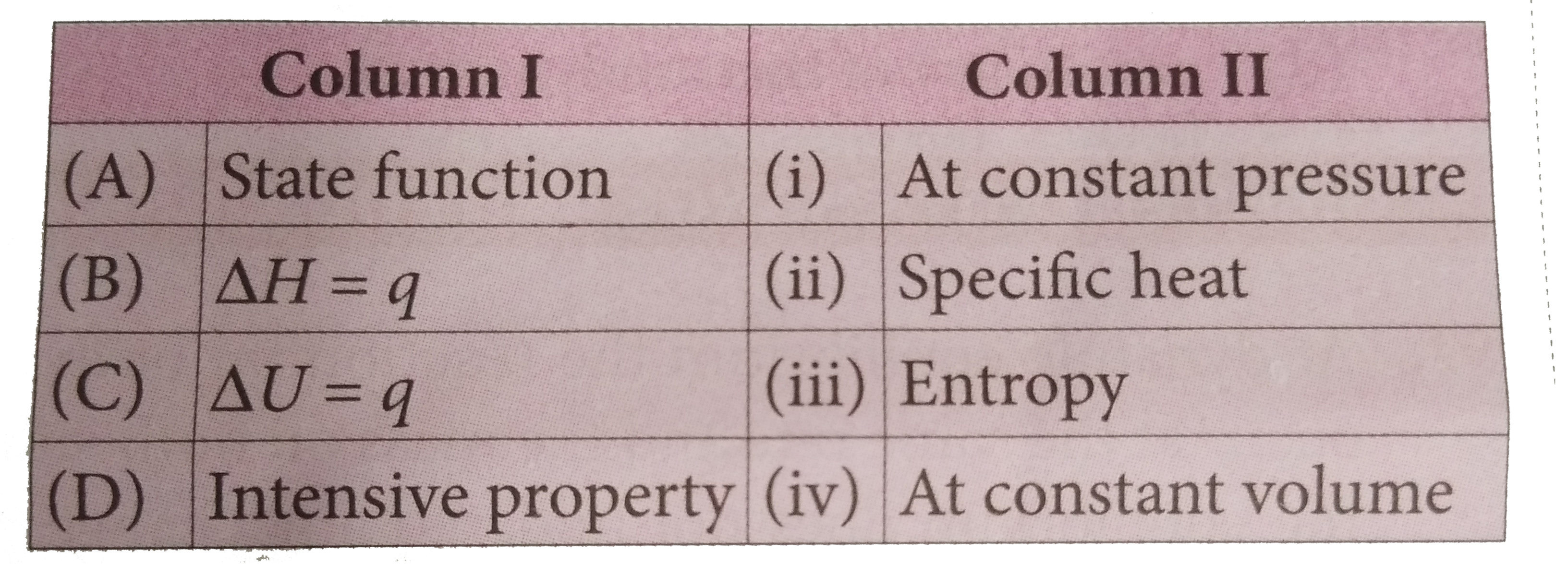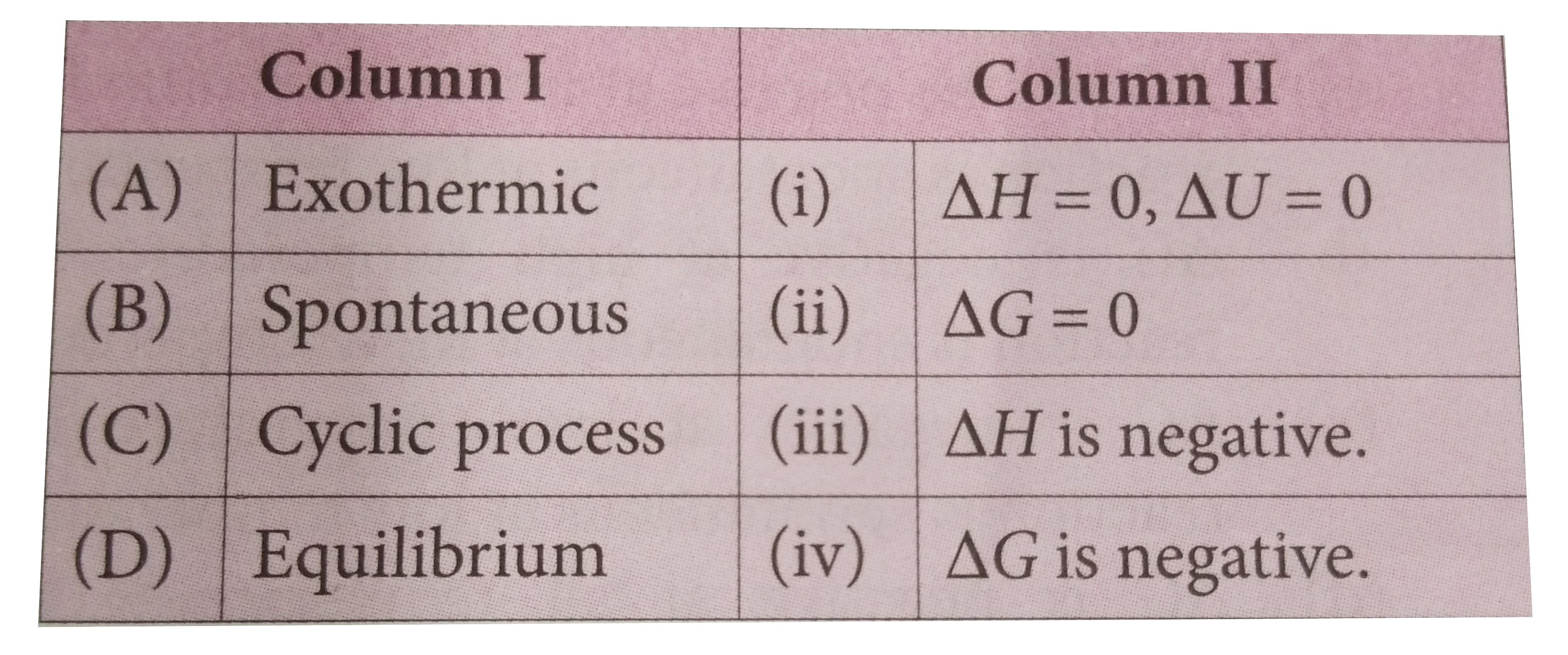Complete Solutions to Spontaneity of chapter THERMODYNAMICS of Class 11 book with complete answers and questions
| Class 11 | CHEMISTRY |
| Chapter | THERMODYNAMICS |
| NCERT FINGERTIPS | Spontaneity |
| Number Of Questions | 30 |
| Academic Year | 2023-24 |
The given enthalpy diagram reperesents which of the following reactions ?

View SolutionStudy the given graph and choose the correct option.

View SolutionIn endothermic reactions,
View SolutionThe total entropy change `(DeltaS_("total"))` for the system and surrounding of a spontaneous process is given by
View SolutionWhich of the following expressions regarding entropy is not correct?
View SolutionFor a reaction, `P+Q rarr R+S`. The value of `DeltaH^(@)` is `-"30 kJ mol"^(-1) and DeltaS" is "-"100 J K"^(-1)"mol"^(-1)`. At what temperature the reaction will be at equilibrium?
View SolutionWhich of the following reactions will have the value of `DeltaS` with a negative sign?
View SolutionA reaction is at equilibrium at `100^(@)C` and the enthalpy change for the reaction is `"42.6 kJ mol"^(-1)`. What will be the value of `DeltaS` in `"J K"^(-1)"mol"^(-1)`?
View SolutionEnthalpy change for the process,
`H_(2)O"(ice")hArr H_(2)O"(water)"`
is `"6.01 kJ mol"^(-1)`. The entropy change of 1 mole of ice at its melting point will be
View SolutionAt what temperature liquid water will be in equilibrium with water vapour?
`DeltaH_("vap")="40.73 kJ mol"^(-1),DeltaS_("vap")="0.109 kJ K"^(-1)"mol"^(-1)`
View SolutionFor a reaction: `X rarr Y+Z`
Absolute entropies are `X="120 J K"^(-1)"mol"^(-1),`
`Y="213.8 J K"^(-1)"mol"^(-1) and Z="197.9 J K"^(-1)"mol"^(-1)`.
What will be the entropy change at 298 K and 1 atm?
View SolutionWhat will be the melting point of KCl if enthalpy change for the reaction is `"7.25 J mol"^(-1)` and entropy change is `"0.007 J K"^(-1)"mol"^(-1)`?
View SolutionFor reversible reaction : `X_((g))+3Y_((g))hArr 2Z_((g)), DeltaH=-"40 kJ"` Standard entropies of X, Y and Z are 60, 40and `"50 J K"^(-1)",ol"^(-1)` respectively. The temperature at which the above reaction is in equilibrium is
View SolutionAt 373 K, steam and water are in equilibrium and `DeltaH=40.98" kJ mol"^(-1)`. What will be `DeltaS` for conversion of water into system ?
`H_(2)O_((l))rarrH_(2)O_((g))`
View SolutionMatch the column I with column II and mark the appropriate choice.

View SolutionRead the following statements regarding spontaneity of a process and mark the appropriate choice.
(i) When enthalpy factor is absent then randomness factor decides spontaneity of a process.
(ii) When randomness factor is absent then enthalpy factor decides spontaneity of a process.
(iii) When both the factors take place simultaneously, the magnitude of both of factors decide spontaneity of a process.
View SolutionWhich of the following processes is a non-spontaneous process?
View SolutionWhich of the following statements regarding Gibb's energy change is correct?
View SolutionFor a reaction to be spontaneous at any temperature, the conditions are
View SolutionFor the reaction given below the value of standard Gibbs free energy of formation at 298 K are given. What is the nature of the reaction?
`I_(2)+H_(2)Srarr2HI+S`
`DeltaS_(f)^(@)(HI)="1.8 kJ mol"^(-1), DeltaG_(f)^(@)(H_(2)S)="33.8 kJ mol"^(-1)`
View SolutionWhat is the entropy change when 1 mole oxygen gas expands isothermally and reversibly from an initial volume of 10 L to 100 L at 300 K ?
View SolutionMathc the following columns and mark the appropriate choice.

View SolutionOne word answer is given for the following definitions, Mark the one which is incorrect.
View SolutionIn a reaction `P+Q rarr R+S`, there is no change in entropy, Enthalpy change for the reaction `(DeltaH)` is `"12 kJ mol"^(-1)`. Under what conditions, reaction will have negative value of free energy change?
View SolutionFor reaction, `2K_((g))+L_((g))rarr2M_((g)),DeltaU^(@)=-"10.5 KJ and "DeltaS^(@)=-"44.1 J K"^(-1)`. Calculate `DeltaG^(@)` for the reaction and predict whether the reaction will be spontaneous or non-spontaneous?
View SolutionWhich of the following statements is not correct ?
View Solution`DeltaG` is the net energy available to do useful work and is a measure of free energy. If a reaction has positive enthalpy change and positive entropy change, under what conditions will the reaction be spontaneous?
View SolutionDissolution of ammonium chloride in water is an endothermic reaction, yet it is a spontaneous process. This is due to the fact that
View SolutionWhat will be the signs of `DeltaH` and `DeltaS` when NaOH is dissolved in water?
View SolutionAt absolute zero, the entropy of a pure crystal is zero. This is
View Solution
Spontaneity questions and complete solutions for chapter THERMODYNAMICS of MTG CHEMISTRY (HINGLISH) of Class 11